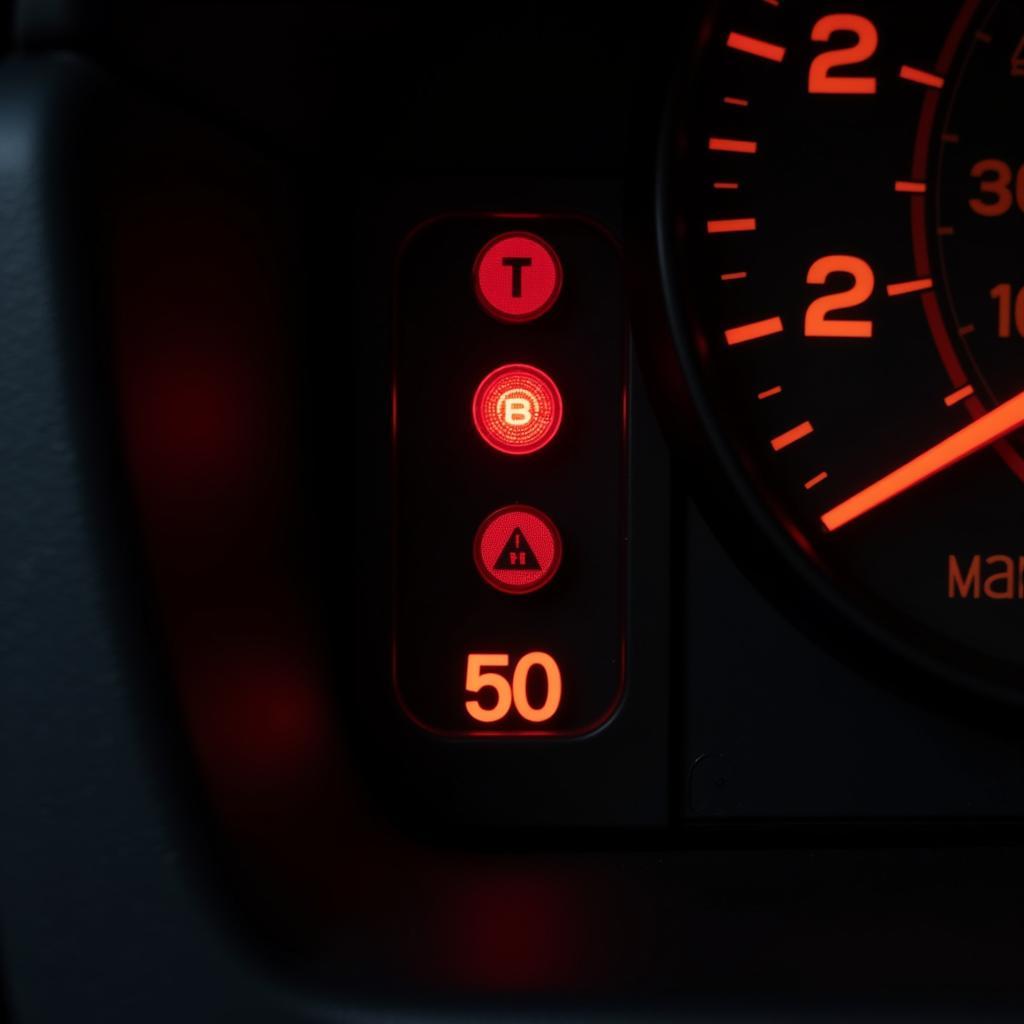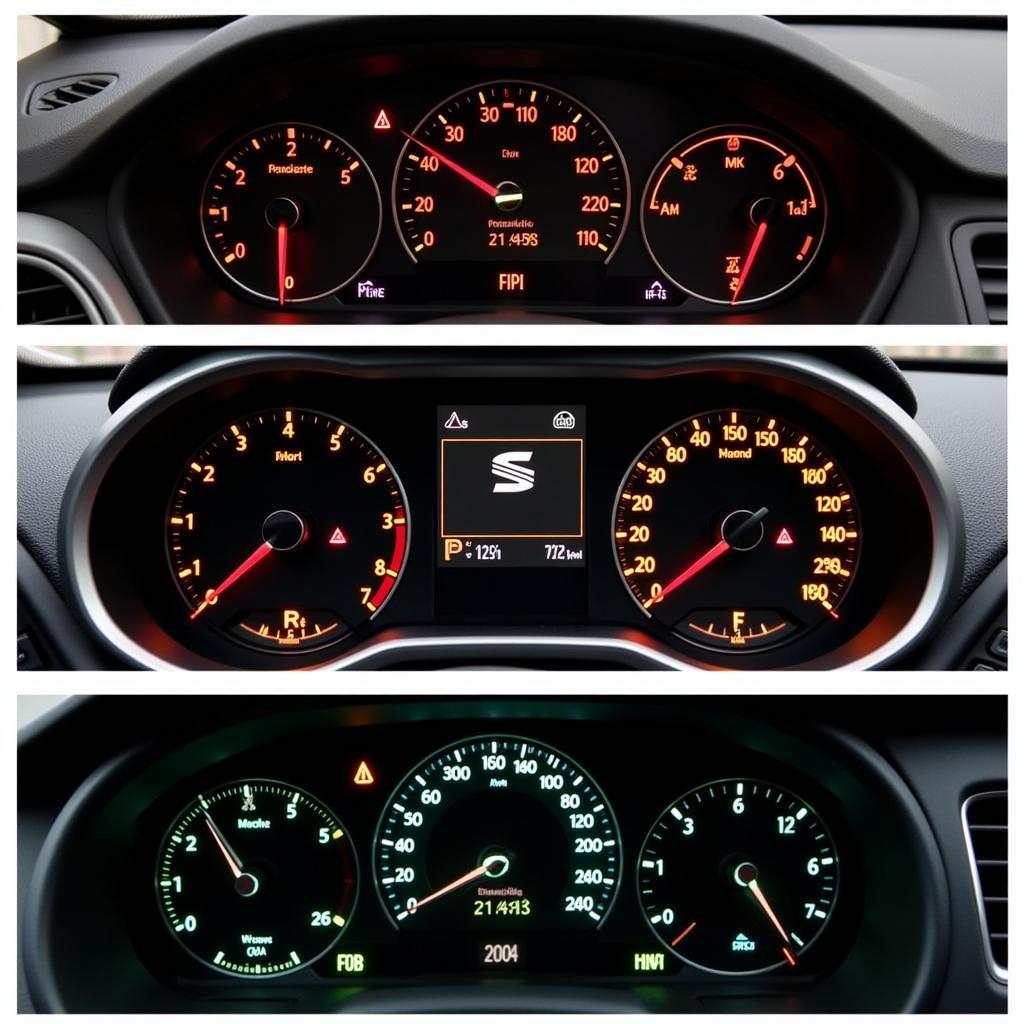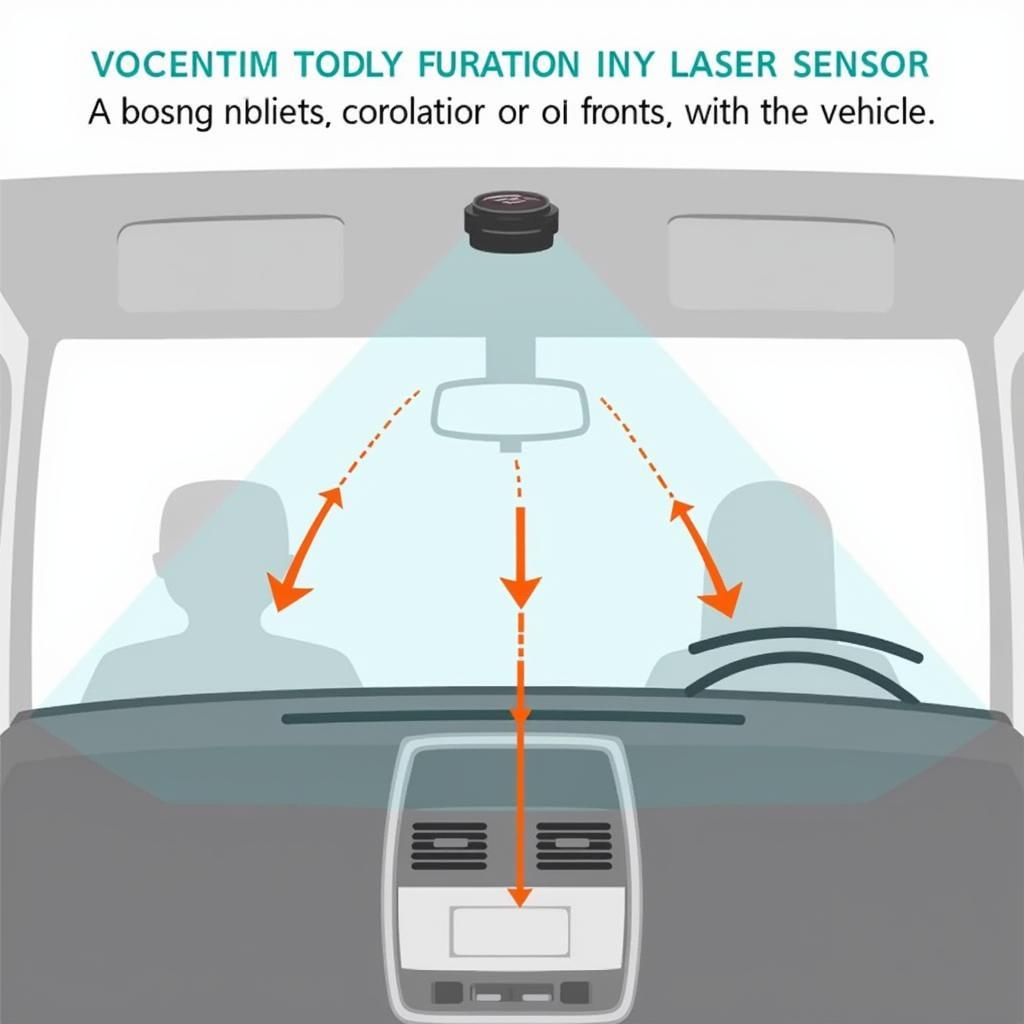The red brake warning light on your BMW E36 dashboard can be a worrying sight. While it often signals a serious issue, it can sometimes be triggered by minor problems or even glitches in the system. This comprehensive guide will walk you through the common causes of the E36 brake warning light, how to diagnose the problem, and the potential solutions, including how to reset the light.
Understanding Your E36’s Brake Warning Light
Your BMW E36 utilizes a sophisticated electronic system to monitor its braking components. When the brake warning light illuminates, it indicates that the system has detected an issue that requires your attention. This could range from something as simple as low brake fluid to a more serious problem with the ABS system.
 BMW E36 Dashboard with Brake Warning Light Illuminated
BMW E36 Dashboard with Brake Warning Light Illuminated
Common Causes of the E36 Brake Warning Light
Before you panic, understand that several factors can trigger the brake warning light on your E36. Here are some of the most common culprits:
- Low Brake Fluid: This is the most common cause. Brake fluid naturally depletes over time, and a low level can trigger the warning light.
- Worn Brake Pads: Your E36’s brake pads are equipped with wear sensors. When the pads wear down to a certain level, these sensors trigger the warning light.
- Faulty Brake Pad Sensor: While less common, a malfunctioning brake pad sensor can also trigger the warning light, even if your brake pads are fine.
- ABS Issues: Problems with the Anti-lock Braking System (ABS), such as a faulty wheel speed sensor, can illuminate the brake warning light.
- Brake Light Switch Malfunction: A faulty brake light switch might not only prevent your brake lights from functioning but can also trigger the warning light.
- Hydraulic System Leak: A leak in the brake lines, calipers, or wheel cylinders can lead to a loss of brake fluid pressure and activate the warning light.
Diagnosing the Problem: A Step-by-Step Approach
Determining the exact cause of the brake warning light requires a systematic approach:
- Check the Brake Fluid Level: Open the hood and locate the brake fluid reservoir. Check the fluid level. If it’s below the minimum mark, add the correct type of DOT 4 brake fluid.
- Inspect the Brake Pads: If the brake fluid level is adequate, the next step is to check your brake pads. Visually inspect the pads through the wheels. If they appear significantly worn, it’s time for a replacement.
- Examine the Brake Lines: Inspect the brake lines running along the undercarriage of your E36 for any signs of leaks, cracks, or damage.
- Consult a Professional: If you’re unable to identify the issue, or if the problem persists after addressing the common causes, it’s essential to seek help from a qualified mechanic specializing in BMW vehicles. They have the expertise and equipment to diagnose more complex issues like ABS problems or internal leaks.
Resetting the BMW E36 Brake Warning Light
In some cases, the brake warning light might remain illuminated even after addressing the underlying issue. This usually requires a manual reset. Here’s how you can attempt to reset the brake warning light on your E36:
- Disconnect the Battery: Disconnect the negative terminal of your car battery and wait for a few minutes. This can sometimes reset the system and turn off the warning light.
- Reconnect the Battery: Reconnect the battery terminal and start your engine. Check if the warning light has gone off.
Important Note: If the warning light persists even after resetting the system and addressing the underlying cause, it’s crucial to have your vehicle inspected by a qualified mechanic immediately.
e36-brake-pad-warning can be a recurring problem if not addressed properly.
Preventing Future Brake Warning Lights
Here are some preventive measures to minimize the chances of the brake warning light illuminating again:
- Regular Brake Fluid Checks: Make it a habit to check your brake fluid level at least once a month.
- Timely Brake Pad Replacement: Don’t ignore the brake pad wear indicator. Replace your brake pads as soon as you notice signs of wear.
- Annual Brake System Inspections: Schedule an annual brake system inspection with a trusted mechanic.
FAQs: BMW E36 Brake Warning Light Reset
1. Can I drive my E36 with the brake warning light on?
It’s highly discouraged to drive your car with the brake warning light illuminated. It indicates a potential problem with your braking system, putting you and others at risk.
2. Why is my brake warning light flashing?
A flashing brake warning light usually indicates a more serious issue with the braking system, often related to the ABS. Seek professional help immediately.
3. How often should I change my E36’s brake fluid?
It’s recommended to change your brake fluid every two years or 24,000 miles, whichever comes first.
4. What type of brake fluid does my BMW E36 use?
BMW E36s typically use DOT 4 brake fluid. Always double-check your owner’s manual or the brake fluid reservoir cap for confirmation.
bmw 318i brake pad warning light reset shares some similarities with the E36 process.
5. Can I reset the brake warning light myself?
While you can attempt a reset by disconnecting the battery, it’s crucial to address the underlying issue that triggered the light in the first place.
bmw check brake lights warning can also be an indicator of a brake light switch malfunction.
Conclusion: Prioritizing Safety and Maintenance
The brake warning light on your BMW E36 is a crucial safety feature that should never be ignored. While it can be triggered by minor issues like low brake fluid, it can also indicate more serious problems requiring professional attention. Remember, a well-maintained brake system is paramount for your safety and the longevity of your BMW E36.
e36 brake warning light should be addressed promptly to ensure safe driving conditions. Regular maintenance and timely repairs can help prevent unexpected breakdowns and keep your E36 running smoothly for years to come.



